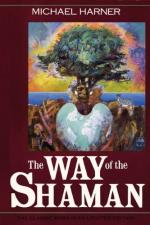
|
| Name: _________________________ | Period: ___________________ |
This quiz consists of 5 multiple choice and 5 short answer questions through Chapter 1, Discovering the Way.
Multiple Choice Questions
1. Harner's reports of the rituals, symbols, and visions of the different tribes he observes are what?
(a) Disturbing.
(b) Simplistic.
(c) Similar.
(d) Foreign.
2. Harner asserts that shamanism transcends any particular what?
(a) Scholarly assessment.
(b) Falsehood.
(c) Philosophy.
(d) Culture.
3. In his attempt to find spirit helpers with the assistance of a Jivaro shaman from Ecuador, what does the author do?
(a) He repeats an ancient chant Jivaro teaches him.
(b) He calls out to spirit helpers in the rainforest.
(c) He joins Jivaro in an out-of-body ritual.
(d) He spiritually goes to a cave underneath a waterfall.
4. What does Harner compare his near-death experience with the Conibo to?
(a) Teachings of Confucius.
(b) Descriptions in the Bible.
(c) Ancient Daoism stories.
(d) The concept of reincarnation.
5. What does Harner point out about the Lakota Sioux and the Coast Salish tribes?
(a) They achieve altered states of consciousness without using hallucinogenic substances.
(b) Are the best natural healers in the world.
(c) Were the first tribes known to practice shamanism.
(d) Shun the practice of shamanism and instead pass down stories from one generation to the next.
Short Answer Questions
1. What does the Jivaro shaman give to Harner to drink?
2. What are the tsentak?
3. Why does Harner include the examples of the Lakota Sioux and Coast Salish tribes for Westerners in particular?
4. Harner writes that in non-ordinary reality, spirit helpers appear as what?
5. Why is Harner afraid to take maikua?
|
This section contains 373 words (approx. 2 pages at 300 words per page) |

|




